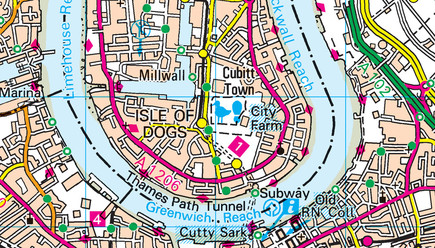

- Expertgps export georeferenced tiff pdf#
- Expertgps export georeferenced tiff install#
- Expertgps export georeferenced tiff update#
- Expertgps export georeferenced tiff pro#
- Expertgps export georeferenced tiff software#
If the output format is a TIFF format, all you need to do is making sure to select the correct map item to use in Reference map, and the output will always be a GeoTIFF. What I am trying to do with the images is export them with the georeferenced data attached and import them to Google Earth Pro.
Expertgps export georeferenced tiff update#
When the image looks like you want (in the correct location, rotation, scale) use the update reference button to write the new georeference data into the file. If you need to export your layout as a georeferenced image (e.g., to share with other projects), you need to enable this feature under the Composition Panel. I have aerial view images (.TIFF) which I have georeferenced using ArcMap 10.4. But remember to use the outside edge and go in a clockwise direction for your control points.

If you have to use this I suggest using the esri help for a tutorial on the subject. You should take care with this and not save over your original. For example, a page may have a main map and an additional smaller overview or key map.
Expertgps export georeferenced tiff pdf#
A PDF document may have one or more maps.
Expertgps export georeferenced tiff pro#
A PDF map is equivalent to an ArcGIS Pro map in that it is the container for spatial data. Note that you may need to utilize the control points tools if you can't match the existing image projection closely to a CRS (utilizing only move, rotate, and scale). pdf file, a map is a defined container of graphics on the PDF page that has a spatial reference. (you may have to resize the display and click again several times).īuttons to get the image exactly where you want it. With some reference data (some known points on both the data and the image, hopefully in the coordinate system of the image)Ĭlick the fit to display button. Zoom to the area the image "should cover". Insert the image into an arcmap (no layout view) dataframe (use the add data butoon). The esri method is there but I don't like it as well. If you don't have the geotiff option in raster design. I want to Geo-reference a tiff image contain a Map for a specific region, I need to add this region (image) and Geo-reference it on the Google map, SO I can see on the map for the region I select the image which I have inserted. Note in the tiff export dialogue you do need to change the dropdown from none to a compression option of your choice.
Expertgps export georeferenced tiff install#
I suggest using tif format as geotiff will be most usable in autocad and arcmap. I was able to get tiff export to work by installing pillow ( PIL ) sudo apt install python3-pip. Not sure if this functionality is available in raster without having map3d or civil 3d installed with it. You can use raster design to export the image with georeferencing. I ensured Output as image was unchecked, Image compression set to Adaptive, and Export georef. I am having the same issue with exporting a PDF from ArcGIS Pro 3.0 to Avenza Maps. The process could use some help from the ImageMagick convert tool for png to tiff/jpeg conversion.If the original images are in an autocad drawing and they are in the correct position, angle and scale. I unchecked output as image, changed image compression to adaptive and checked export georeferenced information. I believe it should not be difficult to craft a script to fetch each of those Icon links and the create world files for each of them, thus in fact converting them into geotiffs. This element is repeated many times both in both a spatial and a time series.

In general, there are four steps to georeference your data: Add the raster dataset that you want to align with your projected data. The georeferencing tools on the Georeference tab allows you to georeference any raster dataset. In your case the Athabasca kml files shows a structure in which the base element is like the following: Georeferencing raster data allows it to be viewed, queried, and analyzed with your other geographic data. The KML/KMZ format has been OGC standardized in 2008 and one can learn a lot by just opening and looking at them.
Expertgps export georeferenced tiff software#
ExpertGPS can convert GPS waypoint and track data from any handheld GPS receiver to your CAD, GIS, or mapping software - AutoCAD, ArcView, and Google Earth are all supported. A KML file is just another xml file with a special markup. How might one export image(s) from image overlays in a KML file to a standard geo-referenced raster format like geotiff Use case: NASAs Earth Observatory has a time series of the changing Athabasca Oil Sands, (). ExpertGPS is an all-in-one mapping solution and file converter, so you can import data, preview it over maps and aerial photos, make corrections, and export it.


 0 kommentar(er)
0 kommentar(er)
